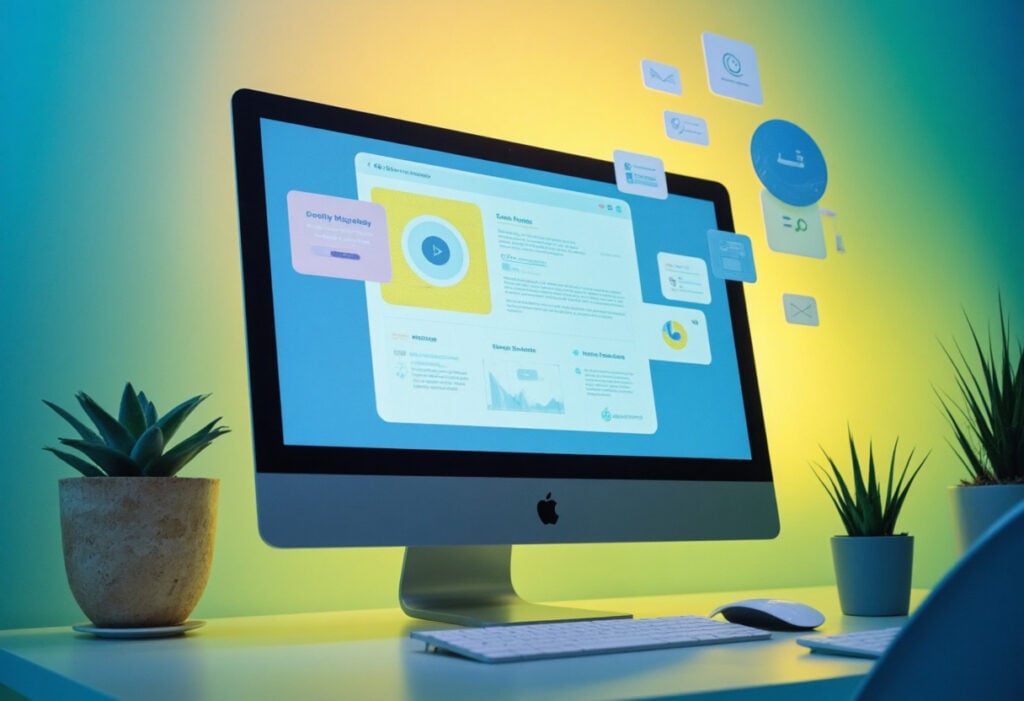When clients come to Yellowball, one of the first questions they ask is: how long will it take to create a website?
The answer is that the website design timeline depends on your goals, your brief, and the scope of the project. But here’s the good news: we don’t believe in dragging things out. Our web design process is streamlined and collaborative, with clear milestones, structured delivery phases and room for flexibility.
So, let’s look at a typical timeline for web design and break down the process stage by stage, with realistic timeframes, insights into what happens behind the scenes, and examples from our portfolio.
Phase 1: Discovery & Strategy (1–2 weeks)
Before we jump into design, we need to have a clear and detailed understanding of your business. That starts with a discovery session—a focused meeting where we dig into your brand, audience, goals, competitors, and what success looks like.
We use that information to build a strategy document or website brief. This isn’t fluff. It defines user journeys, conversion goals, desired functionality, and core content requirements. If SEO is part of your brief, we align your sitemap and content plan to keyword research and technical SEO needs.
Timeframe: 5–10 working days
Key deliverables:
- Discovery workshop or consultation
- Strategic proposal with sitemap
- User journey mapping
- Basic wireframes if required
Example: Discovery for a boutique law firm based in London may take 4 days if the client has a clear offer and existing brand guidelines. However, for a property developer launching multiple sub-brands, discovery may take closer to 2 weeks.
Phase 2: Design (2–4 weeks)
This is where the ideas take shape. Once the structure is signed off, our designers begin crafting your homepage design and layout in Figma. We don’t believe in templates. Every Yellowball website is bespoke, designed to reflect your brand and meet your users where they are.
After the homepage design is approved, we move on to the remaining internal pages. Website design timelines will vary depending on the number of pages, the amount of content, and the level of complexity (e.g., custom animations, interactive elements).
Timeframe: 10–20 working days
Key deliverables:
- Homepage design
- Internal page designs
Client input required: Feedback and sign-off at key checkpoints
Example: For Ballet With Isabella, a brand with strong visual direction, homepage and internal page designs were completed in under 3 weeks. In contrast, a fintech startup with six user personas and multiple conversion paths required four rounds of iteration, taking the full 4 weeks.
Phase 3: Development (3–6 weeks)
Once designs are approved, our developers take over. This is where your web platform comes into play, and our agency can guide you towards the best platform for your business. This can be based on the size of your online business or its functionality and security needs. For example, Laravel is best for highly-customised, complex websites, while WooCommerce is a high-performance choice for Ecommerce businesses.
Whether the site is being built in WordPress, Laravel, WooCommerce, or something else, we follow clean, scalable coding practices and ensure all functionality is as smooth on the backend as it is on the front.
We build mobile-first and test as we go, so there are no surprises later. We also keep SEO best practices in mind during development, especially around speed, schema, meta structure, and accessibility.
Timeframe: 15–30 working days
Key deliverables:
- Fully functional staging site
- Integration of contact forms, CMS, ecommerce functions
- Mobile and cross-browser testing
Example: AirX, an aviation brand with a private client booking platform, required custom functionality that extended the build to 6 weeks. In contrast, a simple services-based site with clear design requirements was developed in 3 weeks.
Phase 4: Content & SEO (Runs concurrently, or 1–2 weeks separately)
Content is often the hidden time-sink in web projects. If your content is ready to go, we’ll migrate and format it within the CMS (content management system), for example, WordPress, as part of development. If not, our content team can help craft SEO-friendly copy that reflects your tone of voice and business goals.
We often run this phase concurrently with design or development to speed things up.
Timeframe: 5–10 working days
Key deliverables:
- Keyword-aligned website copy
- Calls to action for each page
- Formatting and visual hierarchy within CMS
Example: A client who engaged our content team from the beginning had all copy delivered and approved by the end of week 4. Another client who chose to write their own content added a 2-week delay to launch.
Phase 5: Testing, QA & Handover (1 week)
Before launch, your site undergoes a rigorous QA process. This includes:
- Cross-device and browser testing
- Link checks and page speed tests
- Form submissions and functionality reviews
- Accessibility checks
We also provide CMS training if you want to manage your own site content moving forward.
Timeframe: 3–5 working days
Key deliverables:
- Staging review with client
- Final round of amends (if needed)
- Handover and deployment
Example: For a membership-based website with gated content and recurring payments, testing took 6 days. For a simpler portfolio website, we turned around testing in under 48 hours.
Launch & Post-Launch Support
Once we get your green light, we deploy the site to your live server, monitor performance, and troubleshoot any final glitches. We include a grace period for snag lists and offer maintenance retainers for peace of mind.
Our launch process includes:
- DNS and hosting setup
- Google Search Console setup
- Analytics and tracking tags
- Basic SEO checks (301 redirects, sitemaps, robots.txt, etc.)
Post-launch support: 30-day window for fixes or tweaks, with optional ongoing maintenance
Total Timeline: How Long Does It Take to Make A Website?
As you’ve no doubt realised, there’s no such thing as a hard-and-fast website design timeline template. However, that doesn’t mean you can’t get a solid general idea of how long it will take to create a website from scratch when you’re working with a top London agency.
- For a standard website (5–8 pages): 6–8 weeks
- For a larger site (15+ pages, with functionality): 8–12 weeks
- For high-complexity custom builds: 3+ months
If content, design sign-off, or feedback gets delayed, that timeline can extend. But as you can see with our web design timeline examples, prompt communication and shared clarity on goals has helped Yellowball to launch fully bespoke sites in as little as 4 weeks.
How We Keep Projects On-Track for Launch
One of the biggest risks to any timeline? Bottlenecks. Here’s how we reduce them:
- Clear timelines and expectations from day one
- Shared project dashboard for visibility
- Pre-scheduled review meetings
- Content templates and support
- In-house team covering strategy, design, development and content
A Fast Web Design Timeline Doesn’t Mean Rushed Results
At Yellowball, we know that speed matters. But quality matters more. That’s why our project timelines are realistic and our process is battle-tested. We’ve built agile workflows that allow us to deliver faster than most agencies, without cutting corners – just check out our past work to see for yourself.
You’ll always know what stage we’re in, who’s responsible, and what’s needed from you. Whether your site is going live in a month or evolving over several, you can trust us to lead the process with clarity and purpose.If you’re ready to get started, let’s talk about timelines. We’ll tailor a plan that works for your goals, your team, and your deadlines—no guesswork, no jargon, just great design that works. Get in touch today and let’s chat about how long it will take to make a website for your business.










